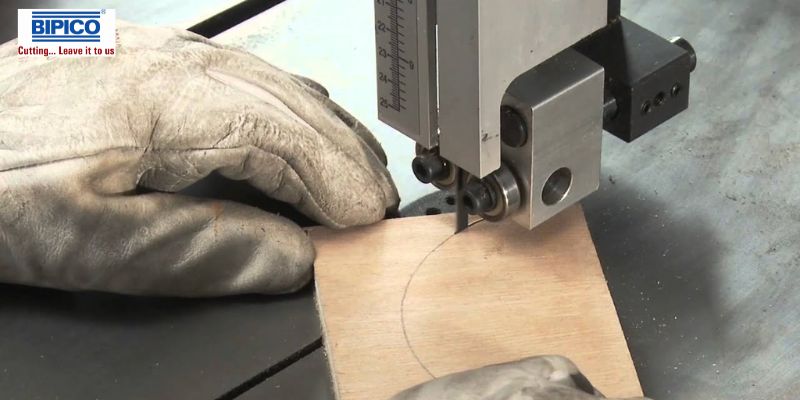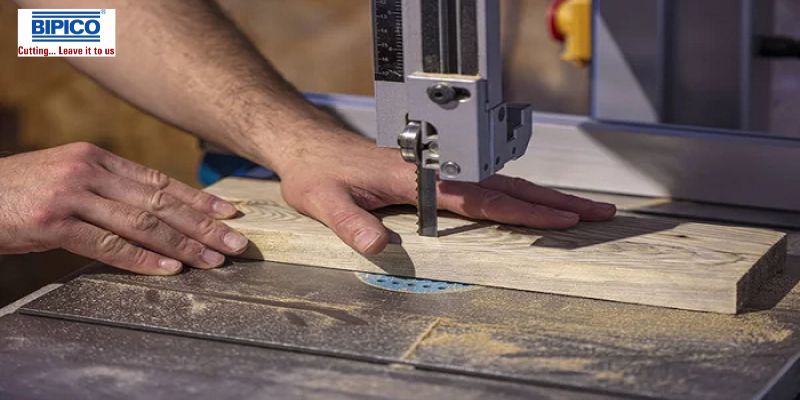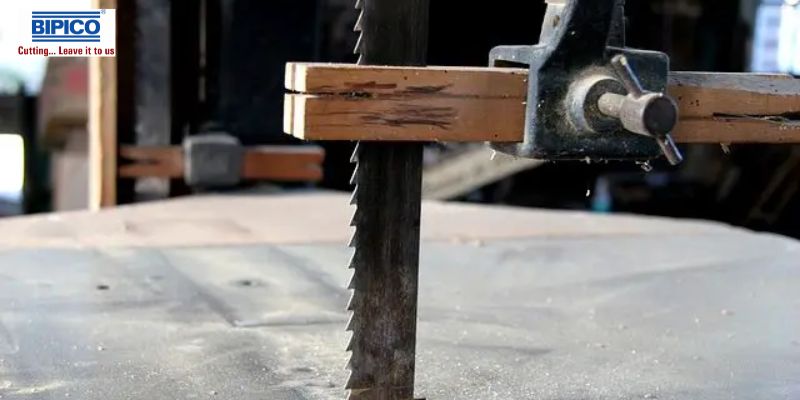How to Choose the Best Band Saw Blade for Your Project?
A band saw blade is a cutting instrument used in the metalworking sector to shape- and size-cut various types of metals. To produce a consistent cutting action, it comprises a continuous loop of toothed steel strips that rotates on two or more pulleys. Steel, aluminium, brass, copper, and other metals can all be cut with the blade teeth.
The band saw blades come in different sizes, widths, and tooth configurations to suit various cutting applications. The most common widths are 1/2 inch, 3/4 inch, 1 inch, and 1-1/4 inch, while the most common tooth configurations are hook, rake, and straight. The choice of blade size and tooth configuration depends on the thickness and hardness of the metal being cut and the desired finish quality.
The band saw blades can be classified into two main categories: bi-metal and carbide-tipped. Bi-metal blades have two metal layers, with high-speed steel teeth welded onto a flexible, high-strength alloy steel backing. They are versatile and durable, making them suitable for cutting a wide range of materials. Carbide-tipped blades, on the other hand, have carbide teeth that are brazed onto a high-strength steel backing. They are best suited for cutting hard materials like titanium and nickel alloys.
To maximize the lifespan of a band saw blade, it is important to use the correct blade for the material being cut, maintain proper blade tension, and use appropriate cutting fluid to reduce heat and friction. Regular blade maintenance, such as cleaning and sharpening, can extend the blade's lifespan and improve cutting performance.
Choosing the right band saw blade depends on a few key factors:
1. Material: The first factor to consider is the material you will cut. Different materials require different blade types. For example, a blade designed for cutting wood will not work well for cutting metal.
2. Blade Width: The blade width determines the minimum radius the saw can cut. A general rule of thumb is that the blade should be at least three times the thickness of the cut material. So if you're missing a 2-inch thick material, choose a blade at least 6 inches wide.
3. Teeth Per Inch (TPI): The TPI of a blade refers to the number of teeth on the blade per inch. The higher the TPI, the smoother the cut will be. Blades with a lower TPI are better for cutting thicker materials, while blades with a higher TPI are better for thinner materials.
4. Blade Material: The material the blade is made of also plays a role in its performance. Blades made of high-speed steel are durable and can be cut through various materials. Carbide-tipped blades are more expensive but last longer and are better for cutting harder materials like metal.
5. Cutting Speed: The speed you will be cutting will also impact the type of blade you should choose. You will need a blade with fewer teeth per inch if you cut slower. You will need a blade with more teeth per inch for faster cutting.
6. Blade Thickness: The thickness of the blade determines its stability during cutting. A thicker blade will be more stable but have a wider kerf, while a thinner blade will have a narrower kerf but may not be as stable during cutting.
Conclusion
Selecting the right band saw blade is essential for achieving optimal performance and efficiency in cutting different materials. Considerations such as the material being cut, blade width, teeth per inch, blade material, cutting speed, and blade thickness should all be considered when choosing a blade. By carefully considering these factors and selecting the appropriate blade, you can ensure clean, accurate cuts and extend the life of your band saw blade.
The band saw blades are an essential tool in the metalworking industry, providing a versatile and efficient way to cut various types of metals into different shapes and sizes. Choosing the right blade size, tooth configuration, and material is crucial for achieving optimal cutting performance and prolonging the blade's lifespan.






Comments
Post a Comment